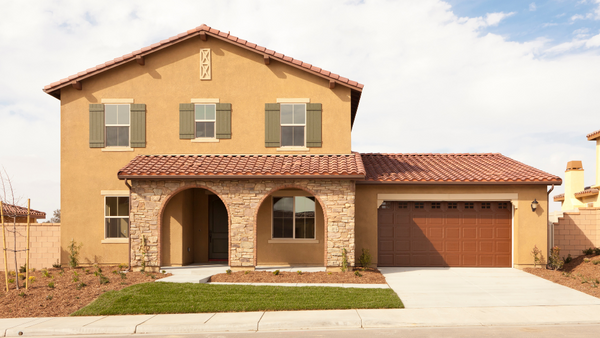When you are selling a home, applying for a mortgage, or refinancing in any way an essential step in that process is a home appraisal. For investors, a home appraisal will happen with every transaction aside from cash-only purchases, whether you are purchasing a new investment property, selling a flipped home, or refinancing.
The process of buying or selling a home is full of checklists and to-dos. While some of these tasks can be offloaded, condensed, or skipped, a home appraisal is often one of the most important steps of the transaction. And if you are working with a lender a home appraisal is always required.
Some may get home appraisals confused with home inspections, and while they both include a walkthrough of the entire property they both serve different purposes. So why does a real estate transaction require an appraisal? Who does the appraisal and what do their findings mean?
What Is A Home Appraisal?
A home appraisal is when an unbiased third-party professional who is not involved in the transaction tours and evaluates a property to determine its value. Home appraisers have all been professionally certified to conduct this kind of review. The appraiser spends time at the property making a detailed assessment of the home to determine its value in a report.
The mortgage lender will order the home appraisal towards the end of the transactional process, usually, after the home inspection has been completed. The appraisal is paid for by the lender or the buyer. On the day of the evaluation, the appraisal will happen while the buyer is absent and the seller or their representative is home to answer questions about the home's history and neighborhood.
PRO TIP: Get started generating leads right now with Invelo - Find Prospects, Market to Leads, Track Deals and Make money. Signup for free and see how easy it is to make money buying and selling homes.
Why Do You Need An Appraisal?
The point of getting a home appraisal is to have an accurate determination of the value of the property based on its condition, the current market, and the homes in the area. The appraisal takes place after the price of the sale has been agreed upon by both parties and can inform how the rest of the transaction proceeds.
The lender usually insists on getting an appraisal from a professional because they don’t want a buyer to overborrow for a property that is not worth as much on the market. In any real estate transaction that is financed through a bank, the home itself is used as collateral for the mortgage. If the buyer cannot cover the cost of the mortgage and the home is foreclosed by the bank, the lender has the physical property and can sell that to recoup some of its lost money. If the home is worth significantly less than the buyer borrowed the lender loses even more money on a single property.
For the buyer, this is also a great way to know that you are not overpaying for a property or if you are, by how much. The more transparency you have in a transaction the smoother the rest of the purchase process can go from there.
How Long Does It Take?
The appraisal itself should not take very long even with a thorough examination of a large property. The certified appraiser will likely be on site for 1-2 hours or more if the property is very big. Once they leave the property they will generate a Uniform Residental Appraisal Report within the next week or two that will be sent to the lender and buyer. The report will then join the rest of the transactional documentation.
What Does An Appraiser Look At?

The appraiser is going to look at several things both on the property and off to determine the home’s value. While the appraiser may spend some time on the property, they are not doing as thorough an inspection as the home inspector will do. They will look at some specific features of the home and property as well as the quality of construction.
Physical Features Of The Home
- Layout: The layout of the home is an important piece of the appraisal. Layouts vary widely depending on the year the home was built and can factor into their desirability. Modern layouts are not necessarily more desirable than older ones, it all depends on the age of the home as well as the style of homes in the surrounding area.
- The Overall Home: The home’s age and square footage are also big metrics when it comes to assessing a home’s value because they often say the most about how much a home is worth in a given neighborhood.
- The Features: An appraiser will also look at things like how many bedrooms and bathrooms are in the home as well as the overall condition of major systems like heating and cooling.
- Updates and Repairs: The appraiser will also look at any additions, refurbishments, and repairs that have been done to the home since the last appraisal. The quality of these can make a big difference in how a home is valued.
- Building Materials: A good home is built with good materials. An appraiser will look at the home itself and the structures inside to see what kind of quality materials the home was made with.
- The Roof: Appraisers will take time to specifically assess the condition of the roof. The roof is a major structural component of any home and they will want to know its condition, materials, and the last time it was replaced or repaired.
- The Foundation: The appraiser will also look at the condition of the foundation while assessing the structural integrity of the home. They will look at the physical condition of the actual foundation as well as where the home is located on the property.
- Floors, Walls, and Ceilings: As part of their investigation into the roof and foundation the appraiser will also look at the condition of the other structural elements of the home. They will check to see their condition and look for signs of structural soundness. Things like cracked walls and warped floors could signify foundation issues that may not be visible when looking at the foundation from the outside.
Real Estate Comps
The home appraiser will not just base their appraisal on the property itself, they will also look at real estate comparables. Real estate comparables are other properties within a certain distance of the appraised property that share similar characteristics like size, age, number of bedrooms, and so on. Usually, an appraiser will look for properties within a half mile of the property being appraised. Depending on the location and neighborhood composition they may look farther or closer.
Appraisers look at those comparable properties and what they have sold for to determine the worth of the property in question. They combine both the physical characteristics of the property and the real estate comps to determine the market value of the property. This is what they eventually compile into a report and send to the buyer.
What Happens Next?
Once an appraisal is complete and sent to the buyer and lender the process of the sale can move forward. There is always the chance that the appraisal will not match the agreed-upon sale price of the property – sometimes the two numbers will be only a little off, and sometimes they will be far off. In those cases, the buyer and seller would proceed as follows…
The Appraisal Is Lower
If the appraisal comes in lower than the agreed-upon price of the house the buyer has a few options on how to proceed. They can first ask the seller to reduce the price to match what the home has been valued at. If that doesn’t work they could also try and negotiate with the seller in other ways to reduce some of the costs of the transaction so they come out even in the end. There are many ways this can be resolved, especially if the difference is not significant.
If the seller will not budge or negotiate the buyer can leave or withdraw their offer if they have signed an appraisal contingency. This contingency gives the buyer an out if the home is appraised for less than what they have agreed to pay. This is usually the last resort in a situation because it means completely abandoning the process and starting over with a new property.
The Appraisal Is Higher
If the home appraisal comes back higher than the sale price the buyer has inherited some equity in the property before even moving in. Because of the appraisal contingency, the seller cannot try and increase the price in the event the home is valued at more than it was sold for.
PRO TIP: Want to find properties to fix and flip? Use Invelo's list builder to search by 100+ filters and find the perfect property to invest in.
What If You Want A Second Opinion?
If you are not happy with your appraisal or are suspicious there was some kind of bias in the process you are more than welcome to get a second appraisal done. This is not entirely uncommon, especially when the home is valued at a lower price than expected. Appraiser bias can happen and it may be worth the extra cost to get the home looked at again. The appraisal can cost anywhere from $300 to $1,000 depending on the size of the house and the appraiser you use.
Are There Transactions That Don’t Require An Appraisal?
If you are involved in an all-cash transaction there is no requirement for a home appraisal, though many real estate investors would like to have one. Since the appraisal is required by the lender and you are not financing the property you have the option of whether or not you want to get one.
Final Thoughts
Home appraisals are one of the cornerstones of any real estate transaction. For the buyer, these reports are a critical part of the process of successfully obtaining a mortgage. If you are looking to get a mortgage or refinance a lender will always want to assess the fair market value during the process to make sure they are lending the correct amount of money.







